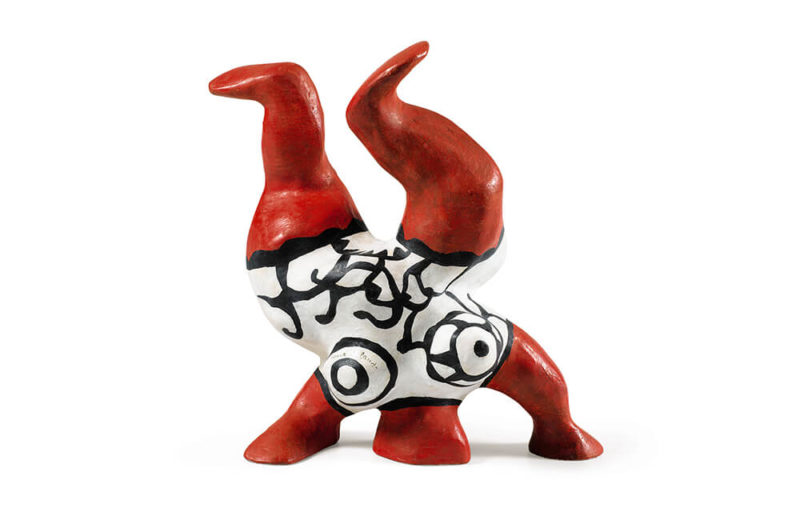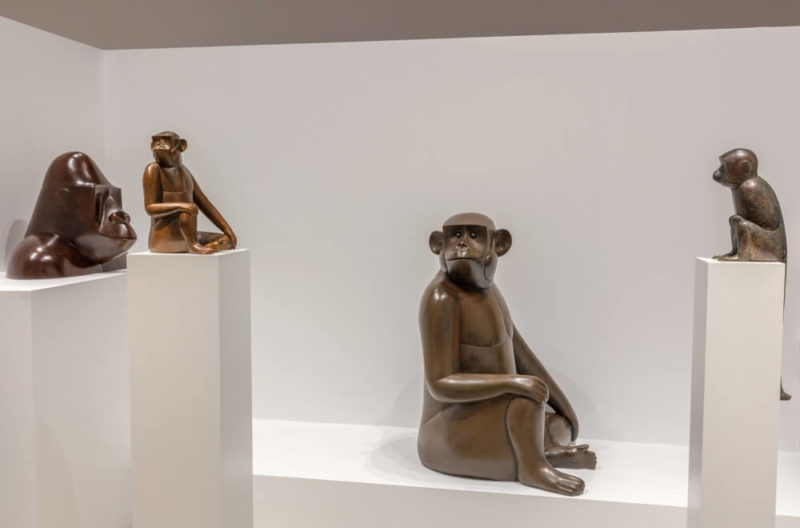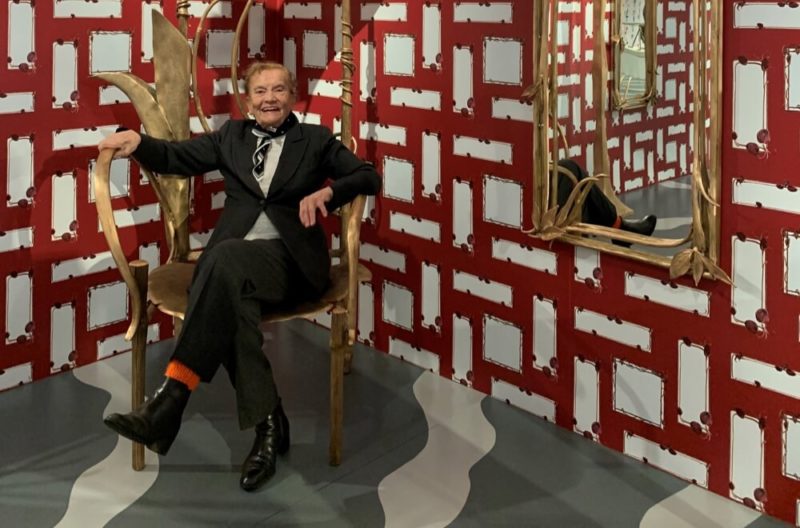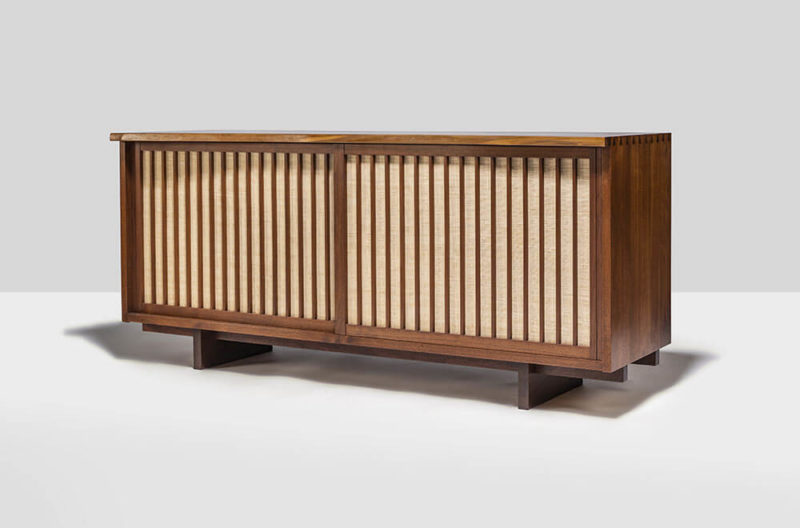Les Lalanne at Trianon, Versailles
The fantasy and surrealism of the renowned French artists reigns supreme in the gardens of Versailles.
Château de Versailles
19th June – 10th October 2021

François-Xavier Lalanne, ‘Singe Avisé’, 2005
COURTESY: © François-Xavier Lalanne & Galerie Mitterrand / PHOTOGRAPH: Capucine de Chabaneix
THE CHATEAU DE VERSAILLES has fallen into a fairytale reverie. Bronze animal sculptures by François-Xavier and Claude Lalanne have been charmingly planted in the gardens of the Petit Trianon and the Queen’s Hamlet – the domain designed by Marie-Antoinette, the Austrian-born wife of Louis XVI – transforming the site into a living dream.
The exhibition has been organised by the gallerist Jean-Gabriel Mitterrand at the invitation of the Château de Versailles’s president, Catherine Pégard. The dozens of sculptures are on loan from Les Lalanne’s daughters, collectors and Mitterrand’s gallery.
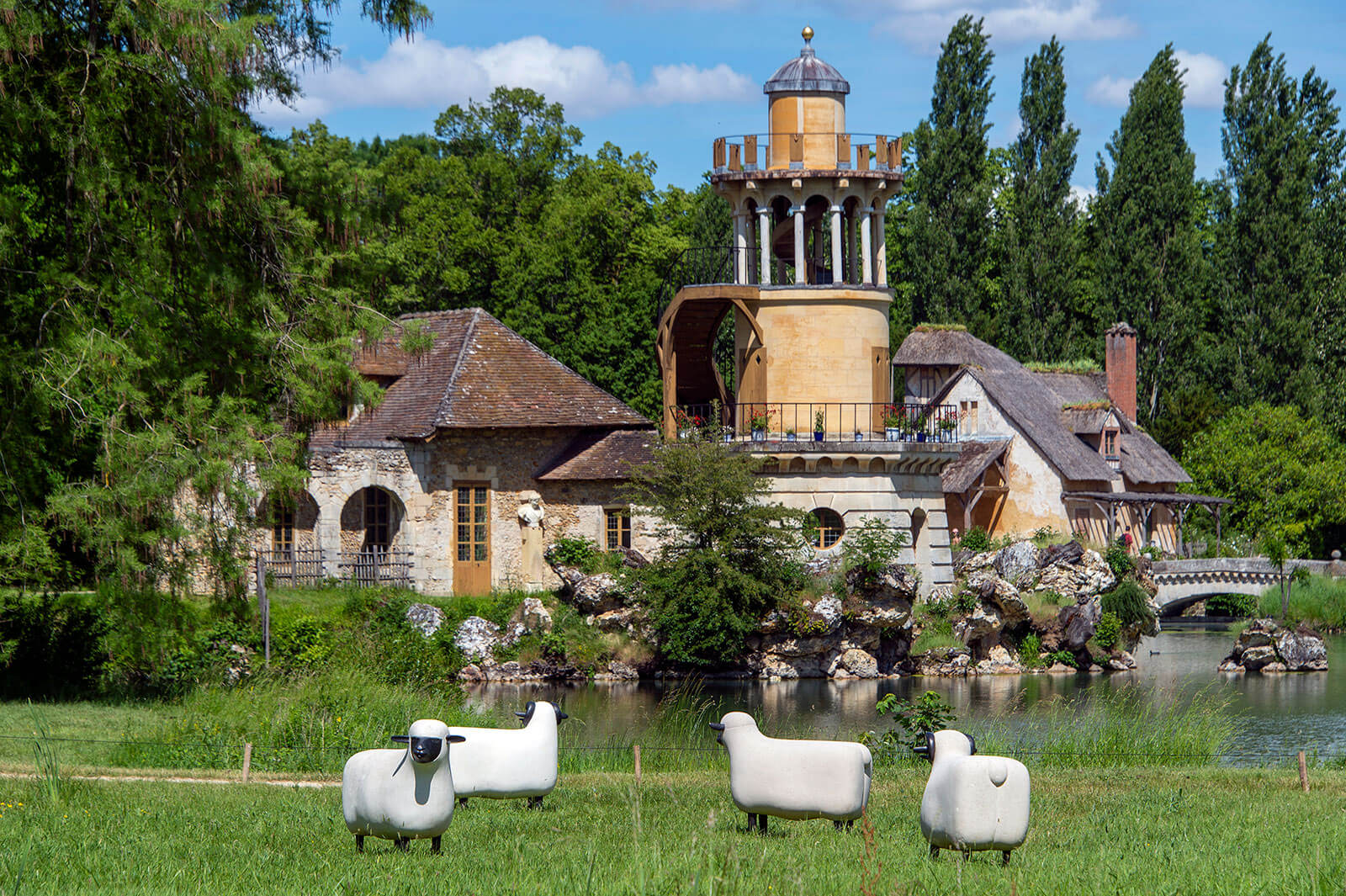
François-Xavier Lalanne, ‘Mouton de pierre’, 2008
COURTESY: © François-Xavier Lalanne & Galerie Mitterrand / PHOTOGRAPH: D. Saulnier
The show follows previous contemporary art exhibitions in the resplendent château, starting with Jeff Koons in 2008 and including Joana Vasconcelos in 2012. As the pandemic has forced a hiatus in the programming, Mitterrand – nephew of former French president François Mitterrand – suggested something on Les Lalanne.
“I was having lunch with Catherine Pégard in January and said that I had an idea for her,” Mitterrand says. Pégard agreed on the spot and the Dior-sponsored exhibition was organised by Mitterrand and Versailles’s museum director Laurent Salomé in five months.
“As this year has been extremely difficult, in between curfews and lockdowns, we thought of bringing a bit of fantasy into the world-renowned gardens of Versailles,” Pégard says. “The château was closed for 192 days last year and, I think, 175 days this year. Having something joyful and mischievous that corresponds to the spirit of Marie-Antoinette’s design of the gardens helps to turn the heavy page.”
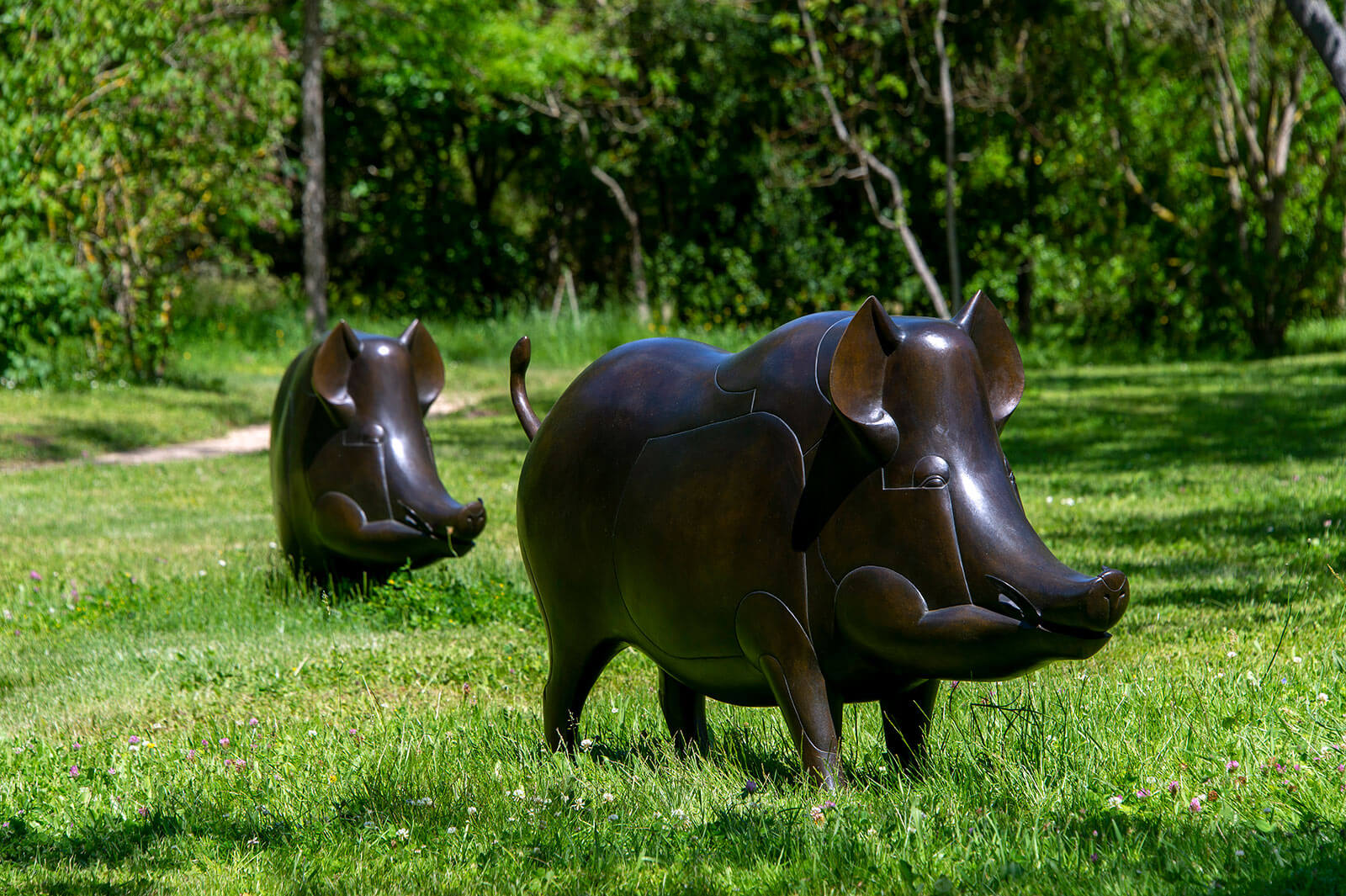
François-Xavier Lalanne, ‘Sangliers de Villepinte II’, 1999
COURTESY: © François-Xavier Lalanne & Galerie Mitterrand / PHOTOGRAPH: D. Saulnier
Although the show marks the first time that so many artworks have been displayed in the Petit Trianon and the English Gardens of the Queen’s Hamlet, the installation is entirely in keeping with Marie-Antoinette’s desire to “create a place for intimate walks and add poetry and drama,” Pégard suggests.
The largest exhibition on Les Lalanne since their monographic show at the Musée des Arts Décoratifs in 2010, it assembles works made by François Xavier (1927-2008) and Claude (1924-2019) over 50 years. How the couple consistently brought a surrealist touch to their flora-and-fauna universe shines through, as do their different approaches.
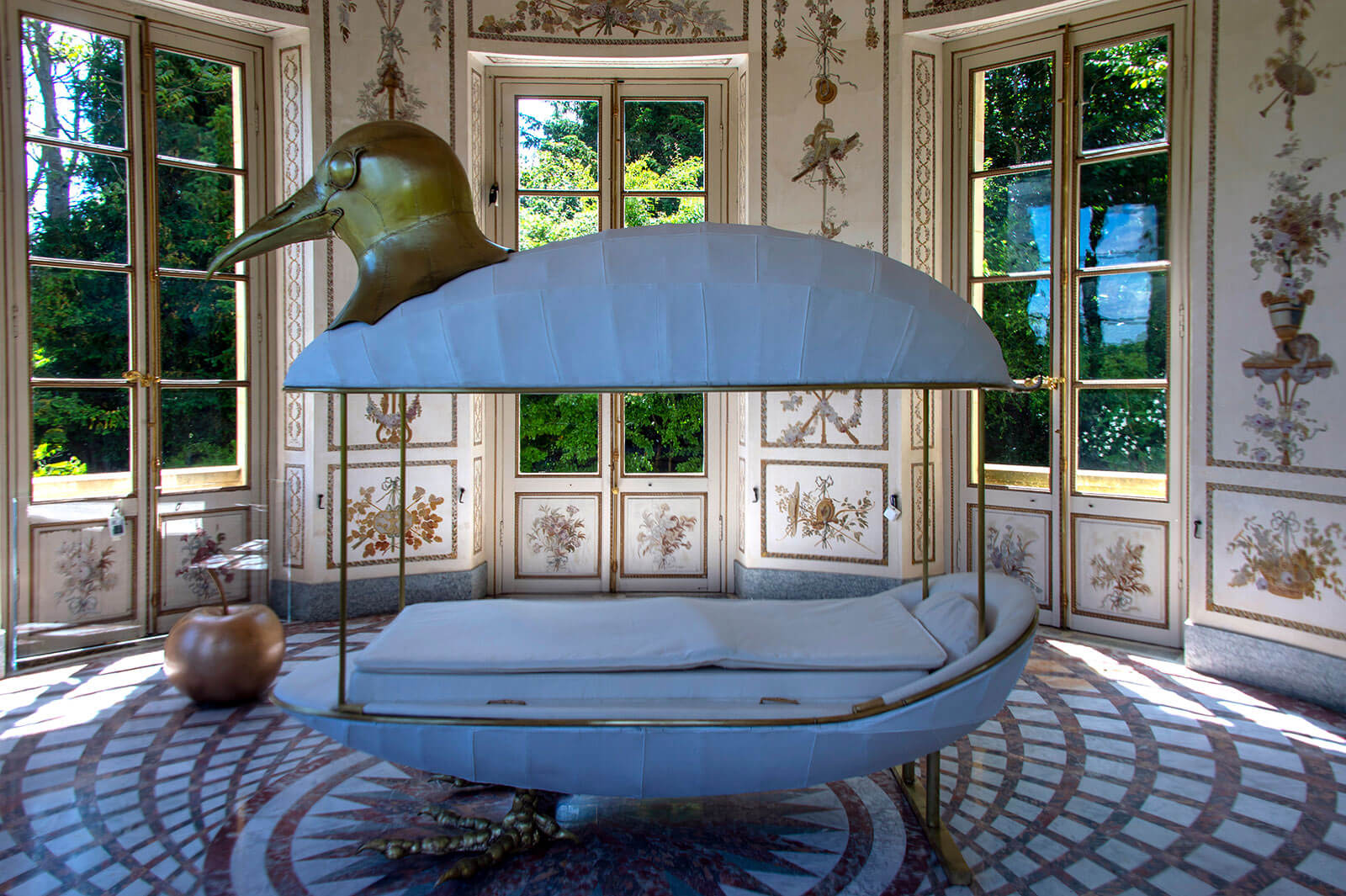
François-Xavier Lalanne, ‘Lit Cocodoll’, 1964
COURTESY: © François-Xavier Lalanne & Galerie Mitterrand / PHOTOGRAPH: D. Saulnier
They had separate studios, says Mitterrand, who remembers François-Xavier – who knew Salvador Dalí, René Magritte and Constantin Brâncuși – as being more methodical and organised than his wife. He first met them when he was advertising director at L’Oréal; his boss launched the gallery Artcurial (now an auction house) and Mitterrand commissioned Les Lalanne to make edition pieces. When Mitterrand left L’Oréal to establish his gallery, they followed him.
It’s a blue-skied afternoon when The Design Edit visits Versailles. François-Xavier’s leafy ‘Elephants Arch’ (1985) at the Petit Trianon recalls the dancing that once animated the royal gardens. In the Pavillon Frais, once used for refreshments, Claude’s ‘Monkey Bed’ (1997), candelabra and ‘Crocodile Bench’ (2006) conjure a bedroom. The bronze pieces exemplify the sinuous poetry of Claude’s work and her attention to detail.
In the manicured garden, François-Xavier’s monkey gazes at an owl perched beyond the trees, a scene bringing to mind exotic paintings by Henri ‘Douanier’ Rousseau. Nearby, a rabbit’s head twists in the breeze – it’s his ‘Lapin à Vent de Tourtour’ (1968-1994) – and a bird looks onto a basin.
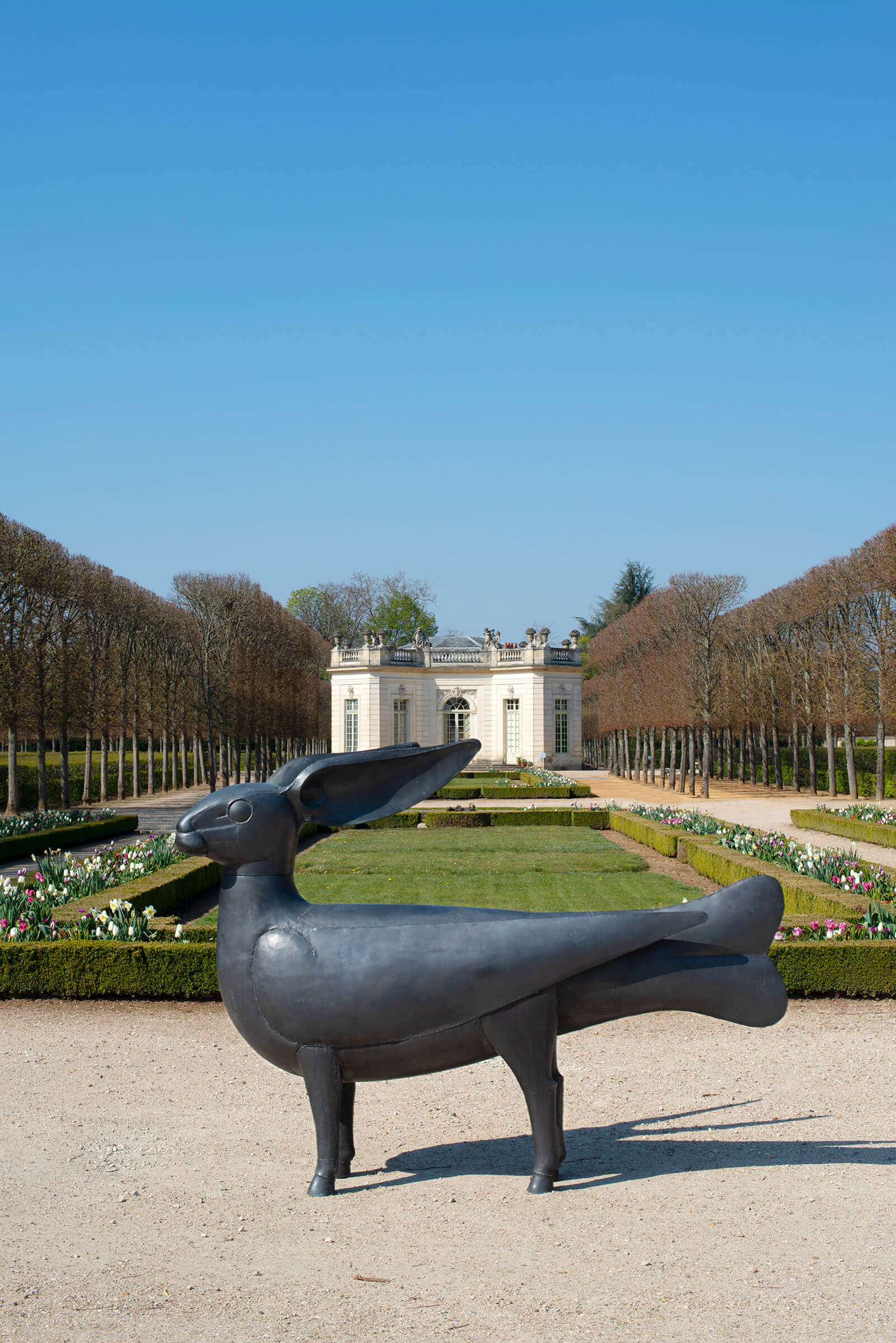
François-Xavier Lalanne, ‘Lapin à Vent de Tourtour’, 1968-1994
COURTESY: © François-Xavier Lalanne & Galerie Mitterrand / PHOTOGRAPH: Capucine de Chabaneix
“We thought of bringing a bit of fantasy into the world-renowned gardens of Versailles …”
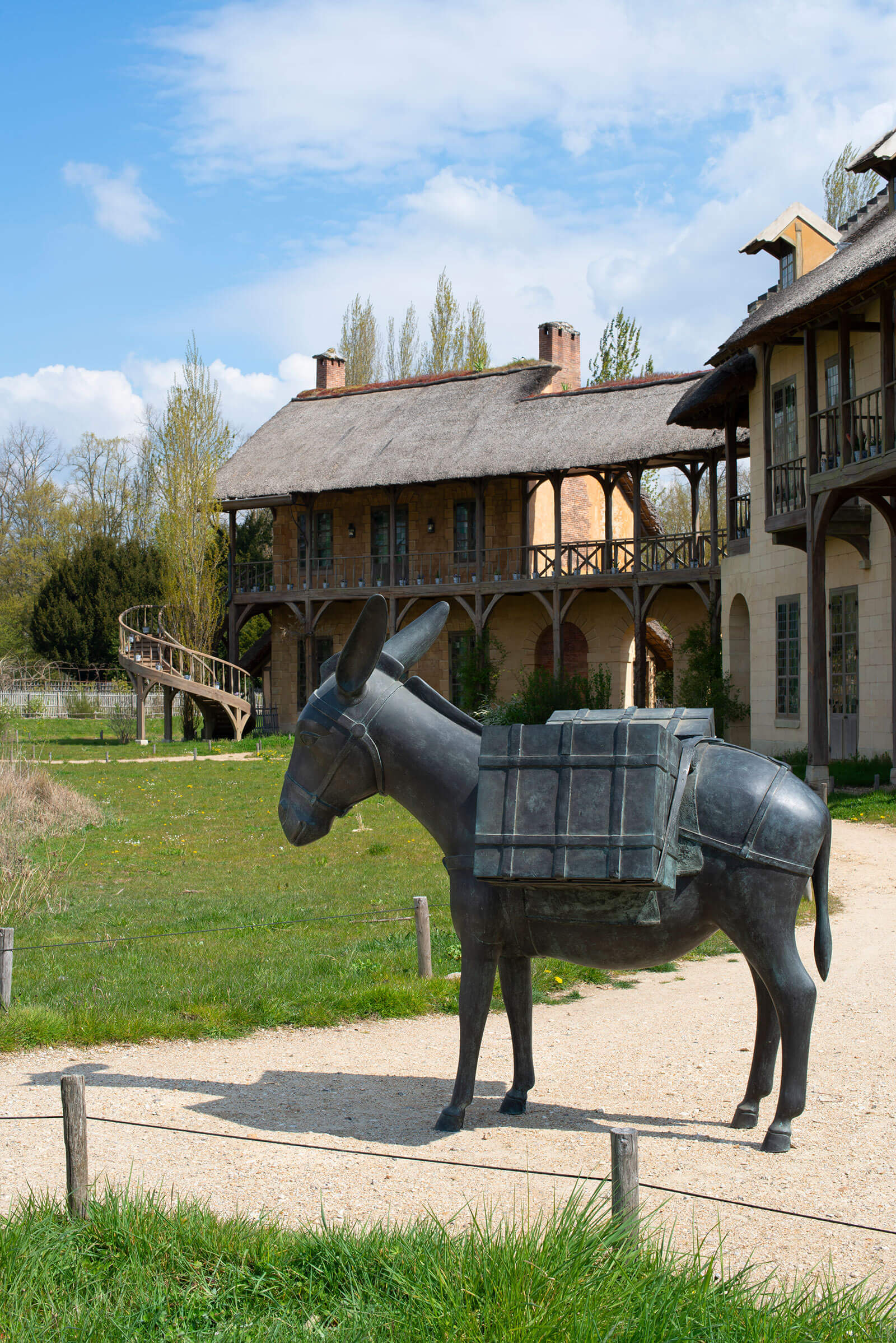
François-Xavier Lalanne, ‘Ane Bâté’, 1985
COURTESY: © François-Xavier Lalanne & Galerie Mitterrand / PHOTOGRAPH: Capucine de Chabaneix
“… something joyful and mischievous that corresponds to the spirit of Marie-Antoinette’s design of the gardens ”
While François-Xavier made animal sculptures, some of them with a concealed function, Claude envisioned fruits and vegetables as breathtaking artworks. Gleaming in the sunshine are her large apple and ‘Choupatte’ (2016) – an oversized cabbage head sprouting feet. In a nearby pavilion, a tortoise scurries away from François-Xavier’s ‘Ostrich Bar’ (1970), its two ostriches balancing an egg with their beaks. The scene is eyed up by a crocodile on Claude’s ‘Crocodile Settee’ (2006), an edition of which sold for $1.5m at Sotheby’s New York in May.
The tour takes on the charm of a pastoral scene as we head to the English Gardens, created by Marie-Antoinette in 1777. Later, she hired the architect Richard Mique to extend them and build a model village with thatched roofs nestling around an artificial lake. Works by Les Lalanne bring an Alice in Wonderland ambiance to the hamlet, Lewis Carroll’s Queen of Hearts echoing with the image of Marie-Antoinette. There’s even a rabbit with a walking cane, Claude’s ‘Lapin de Victoire’ (2007), to serve as a guide.
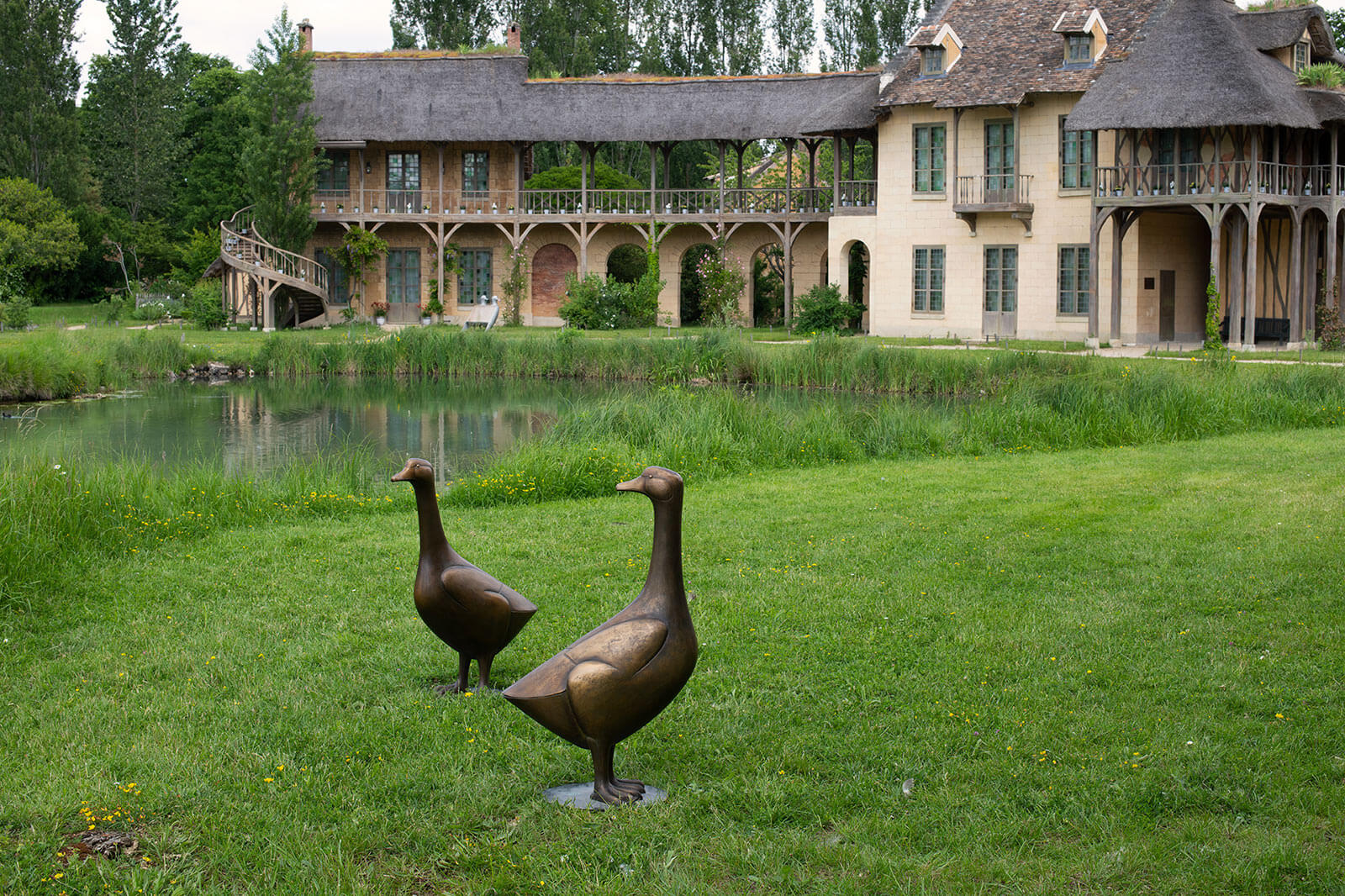
François-Xavier Lalanne, ‘Oies’, 1992
COURTESY: © François-Xavier Lalanne & Galerie Mitterrand / PHOTOGRAPH: Capucine de Chabaneix
In this bucolic setting, François-Xavier’s harnessed donkey from 1985 stands by a mill, while a bear stares at a familiar flock of sheep. The verdant landscape can be glimpsed through a panoramic rectangle cut into a cow. Other works similarly appear in what could be their natural habitat, such as a large-scale duck near the lake. A horse and carriage on the Trianon’s paving stones recall Louis XVI and Marie-Antoinette’s attempt to escape to Austria, before being captured and sent to the guillotine.
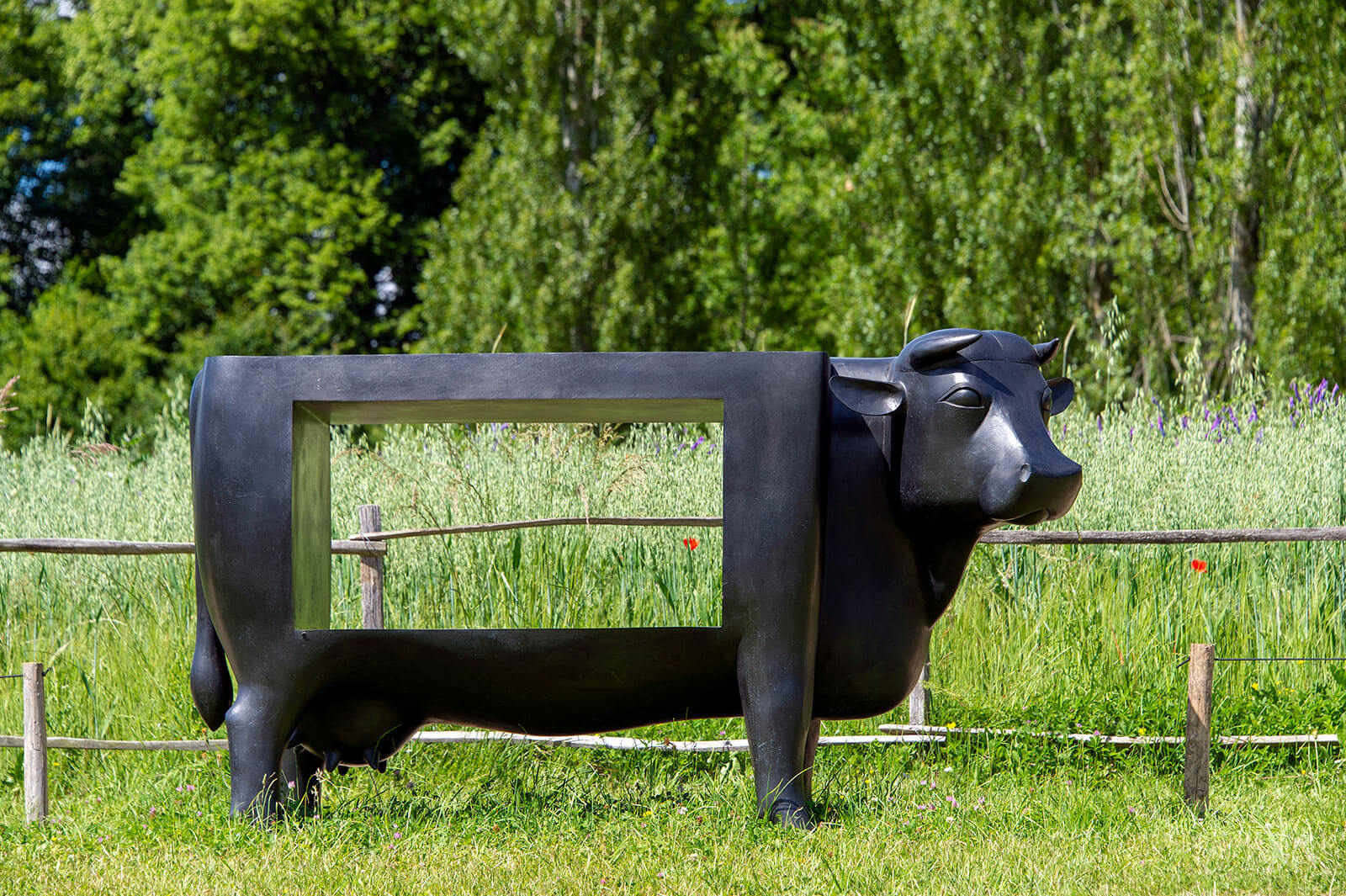
François-Xavier Lalanne, ‘Vache paysage’, 2006
COURTESY: © François-Xavier Lalanne & Galerie Mitterrand / PHOTOGRAPH: D. Saulnier
For collectors of Les Lalanne, the exhibition is good news. The couple’s fame has been rising ever since the Christie’s sale of Yves Saint Laurent and Pierre Bergé’s collection in 2009, where François-Xavier’s ‘YSL’ bar soared to €2.7m, more than ten times its mid-estimate. Two years ago, the Sotheby’s sale of the Lalanne Universe, featuring works from their collection, generated a whopping €91m.
Pégard brushes away any suggestion of the château being used to elevate the market. But she concedes that this exhibition differs from the contemporary art shows, for which living artists are commissioned to create site-specific works.
Will this exhibition contribute to reclassifying Les Lalanne, whose genre-crossing work appears in design auctions? “François-Xavier’s revolution was transforming sculpture into a functional object; it’s not design for me because it’s not the function that takes precedence,” Mitterrand argues.
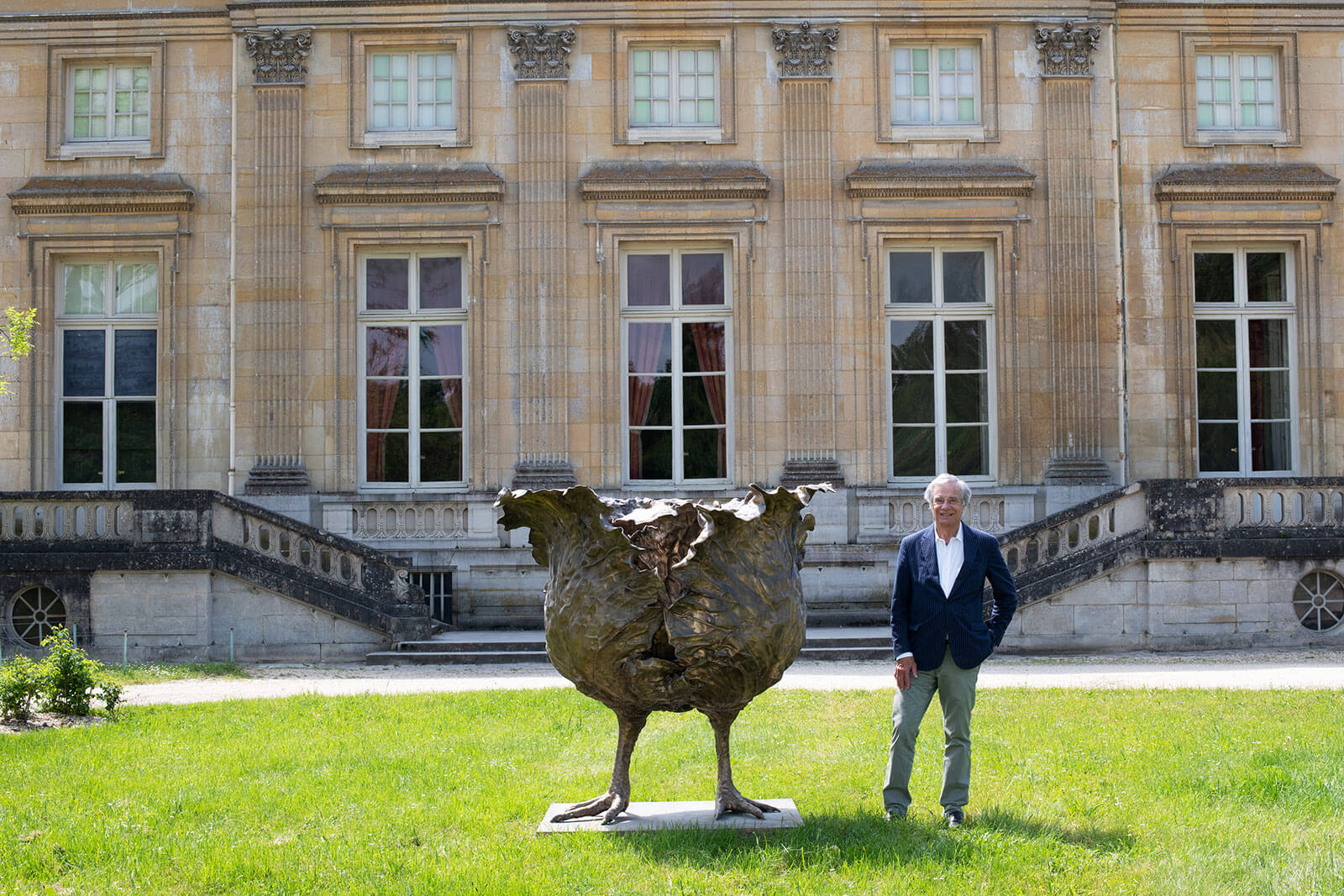
Jean-Gabriel Mitterrand with Claude Lalanne’s ‘Choupatte’, 2016
COURTESY: © Claude Lalanne & Galerie Mitterrand / PHOTOGRAPH: Capucine de Chabaneix
He remembers François-Xavier’s regret at being primarily associated with decorative arts after the couple’s inclusion in the 1977 ‘Artiste, artisan?’ show at the Musée des Arts Décoratifs: “He said, ‘I don’t want to just exhibit at the Musée des Arts Décoratifs but at the Centre Pompidou.’ He was disappointed because he wasn’t treated as one of the major artists of his era.”
Certainly, Mitterrand has worked tirelessly to defend Les Lalanne’s legacy. The Château de Versailles’ magical exhibition puts the functional dimension of their work to one side and emphasises its sculptural qualities instead.




